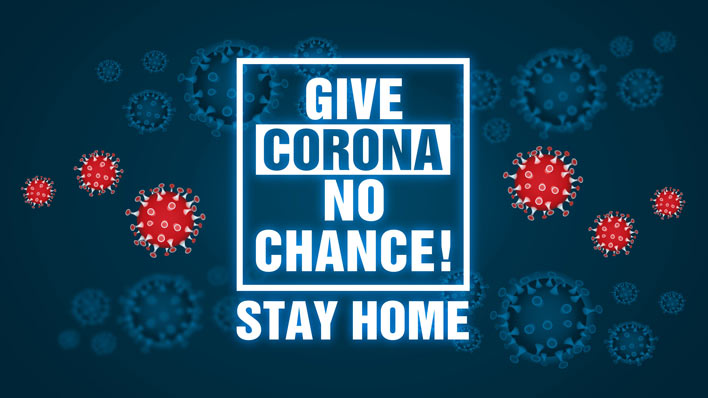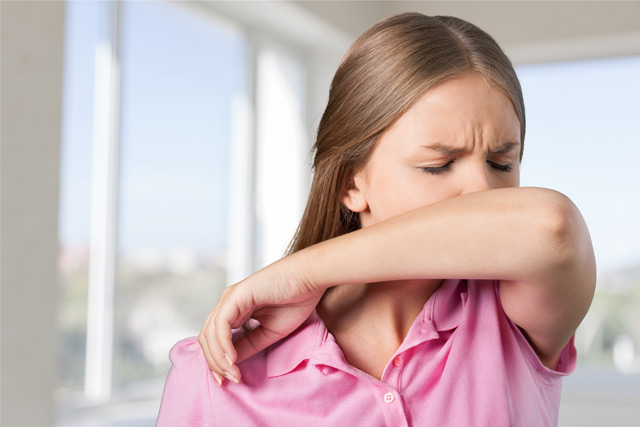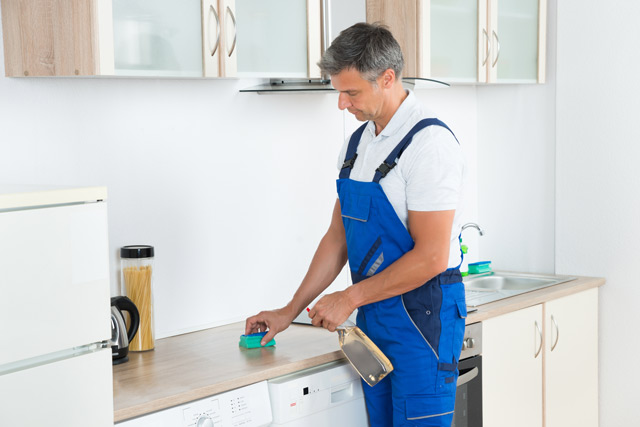Updates
- As of 3:40 pm Eastern Time on April 2, 2020, there have been one million people infected with the novel disease COVID-19.
- On Wednesday, April 1, a committee with the National Academy of Sciences advised the White House advising that the latest research shows that coronavirus can be spread from person to person just by talking, or even breathing. This new development supports recommendations for social distancing, as new data shows that social distancing measures work. The best way for people to help stop the spread is to STAY HOME.
- Also on April 1, Los Angeles Mayor Anthony Garcetti recommended that all residents in that city wear non-surgical masks whenever they absolutely need to leave home. Medical masks should be reserved for the healthcare workers who need them. Regular citizens can protect themselves with a cloth bandana, scarf or balaclava (ski mask), which can be washed after each use. However, wearing masks is not a substitute for sheltering in place: people should stay home unless they absolutely have to go out.
- On March 23, 2020, the Judicial Council of the State of California has suspended all jury trials, both civil and criminal, for the next 60 days. See the order here.
- Effective Monday, March 23, 2020, the Orange County Superior Court will be closed to the public, including attorneys, until further notice. (Click here for News Release.)
- California Governor Gavin Newsom the State Public Health Officer to issue an order for all California residents to stay home, with certain exemptions. This order is effective immediately until further notice. Here is a link to the order: https://covid19.ca.gov/img/N-33-20.pdf
Vital tips to stay healthy and limit the spread of disease:
Wash your hands frequently with soap and water, for at least 20 seconds each time. (Find out more.)
Clean and disinfect frequently-used surfaces and objects often. (See tips.)
Keep at least 6 feet of distance from others.(Find out why this is important.)
Stay home - whether or not you are sick, you should observe social distancing to slow the spread. (Read about options.)
Cover your coughs and sneezes with tissues or your arm. (Find out more.)
Call your doctor if you are at risk or have symptoms. (See who is at risk and learn about COVID-19 symptoms.)
Don’t panic; just do what you can to stay healthy and well - read the article below to find out how:

On March 11, for the first time, the World Health Organization declared the Coronavirus Disease a global pandemic. All over the world, people are wondering: Is it time to panic? What is my risk of getting this disease? How deadly is it?
Coronavirus Disease 2019 (COVID-19) began as an epidemic: a sudden increase of a new disease for which most people do not have immunity. Initially, it affected China, Italy, South Korea, and a few other countries. It has now spread throughout the world, affecting hundreds of thousands of people. This is what makes it a pandemic.
The Difference Between Coronavirus and COVID-19
Coronaviruses are a group of viruses that can cause a range of cold-like symptoms. These may include a runny nose, cough, sore throat and fever. Some coronavirus strains are mild, while others can lead to more dangerous conditions like pneumonia. The coronavirus family is so named because the crown-like spikes on its surface - corona is Latin for crown.Coronaviruses are spread through direct contact with, or close proximity to an infected person. There are seven different types of this virus that can infect humans, including SARS and MERS. COVID-19 is a different strain of those viruses.
How COVID-19 spreads
Based on what we have seen and what scientists know about the spread of disease, coronavirus spreads mainly from contact or close proximity to people. When sick people talk or breath, and especially when they cough or sneeze, they expel respiratory droplets, which can land in the mouths or noses of people who are within about 6 feet.It may also be possible to catch COVID-19 by touching something that has virus droplets on it, and then transferring that virus by using your hand to touch your mouth or rub your nose or eyes.
Coronavirus may spread both during and before symptoms, so it's possible for people who don't even know they are sick to spread COVID-19. This is why social distancing measures are so important.
How Deadly is COVID-19?
According to WHO, about 3.4% of people with reported COVID-19 cases globally have died. To continue the comparison to influenza, while COVID-19 doesn’t spread as easily, it is over three times more deadly than the seasonal flu, which typically kills far fewer than 1% of those infected.However, that does not mean everyone who contracts the virus has a 3.4 percent chance of dying. Certain people are more likely to develop more serious complications from COVID-19 illness. These include:
- Adults over 60
- People with chronic medical conditions, such as heart disease or cancer, that impact ability to fight illness.
- People who have or are recovering from conditions that affect the respiratory system, such as asthma, COPD, or bronchitis.
- People who have auto-immune diseases, such as lupus or interstitial lung disease.
If this describes you, please consult with your primary physician about what you can do to protect yourself.
If you are otherwise healthy, and have access to quality healthcare, even if you do contract this strain of coronavirus, you have a very good chance of recovery.
Also, the severity of the virus increases with age. Most children with COVID-19 have less severe symptoms. The fatality rate for young patients is far lower than older ones. But children who have chronic health conditions are at a greater risk, and all children can still carry and transmit the disease.
Whatever your age or health, it’s important to know how to identify, prevent, and respond to COVID-19.
Symptoms
As noted above, symptoms of COVID-19 are similar to the flu, and usually typically include fever, cough, runny nose, or shortness of breath. If you or your child develops these symptoms, call your doctor immediately.IMPORTANT: Don’t simply show up at the doctor’s office, health care clinic or emergency room! Be sure to call first and let them instruct you on where to go, so that you don’t inadvertently spread the disease to others.
If you develop these emergency warning signs for COVID-19, call 911:
- Difficulty breathing
- Persistent chest pain or pressure
- Sudden confusion or lethargy
- Blue tinge to the lips or face
Guidelines for prevention
Right now, scientists’ best estimate is that it will be at least a year before a vaccine is ready for widespread use to prevent COVID-19.The best way to prevent illness is to avoid exposure. Here are recommendations from the Centers for Disease Control and Prevention (CDC) on how to protect yourself and your family at home, and your employees and coworkers at wor
At home
Protect yourself
- Wash your hands thoroughly and frequently
- You don’t need special hand soap or hand sanitizer if you have soap and (preferably warm) water handy.
- Using soap and water, rub your hands together vigorously to create a lather - do this on both sides of each hand.
- Wash your hands for at least 20 seconds. The CDC recommends humming the “Happy Birthday” song to time it.
- Wash your hands after you have been in a public place.
- If there isn’t soap and water available where you are, use a hand sanitizer with at least a 60% alcohol content. Use enough to spread the sanitizer over all surfaces of your hands. Rub the backs and fronts of your hands together vigorously until they feel dry.
- Try to keep your hands away from your face - especially your mouth, nose or eyes.
- Avoid close contact with people, especially those who are sick, or if COVID-19 is spreading in your community. This is especially important for those who are at high risk, including people over 60 or those who have auto-immune diseases.
Protect others

- If you are sick, stay home! If you need medical care, and your symptoms are similar to those listed above, call your doctor for instructions on how to receive care.
- Cover coughs and sneezes.
- If you have to blow or wipe your nose, sneeze, or cough, use a clean tissue and throw it in the trash. Then wash your hands for 20 seconds.
- If no tissue is available when you cough or sneeze, do the “vampire cough.” Sneeze or cough into the inside of your elbow, like Count Dracula pulling his cape over his face.
- Wear a facemask - but only if you are sick, or caring for someone who is.
- If you are sick wear a facemask whenever you are around other people.
- If you are NOT sick, you do not need to wear a facemask. Because facemasks may be in short supply, they should be saved for those who need to care for infected individuals.
- Don’t share dishes, cups, utensils, or towels with other people in your home.
- Clean and disinfect all frequently touched surfaces: countertops, desktops, tables, doorknobs, light switches, keyboards, toilets and toilet handles, faucets, and sinks. Most common EPA-registered household disinfectants are fine.
If You or Someone In Your Home Contracts COVID-19
- Isolate at home
- People who are mildly ill with COVID-19 should stay home throughout their illness, except for receiving medical care.
- Avoid public areas such as work, school, public transportation, ride-sharing, or taxis.
- Separate the sick person from other people in your home. A person with COVID-19 should stay in a specific room and away from other people and use a separate bathroom, if available.
- Call ahead before going to a medical facility. Be sure the healthcare provider knows that you have or may have COVID-19, and follow their instructions to keep from exposing other people.

At work
- Actively encourage sick employees to stay home:
- Employees who have symptoms of respiratory illness should stay home! They should not return to work until these symptoms have been gone for at least 24 hours, without using fever reducer, antihistamines or cough suppressants.
- Be flexible with your sick leave policies, and be sure all employees are aware of their options. For example, in California, employees who have been diagnosed with COVID-19 can apply for disability if they do not have sick or vacation days to cover their time off. Those who must care for a sick family member can file for Paid Family Leave. Find out your firm’s policies and the options in your community for both sick employees and caregivers.
- If you have contract or temporary employees, make sure they also understand the importance of staying home when sick and any options available to them.
- Don’t require sick employees to validate their illness or to return to work. Many medical facilities may be unable to provide this documentation in a timely way.
- Send sick employees home:
- If an employee arrives or becomes sick at work with respiratory illness symptoms, send them home immediately. Disinfect the person’s work area.
- Emphasize safe practices in the workplace by sending internal messages encouraging employees to stay home when sick, use respiratory etiquette, and wash their hands frequently. The CDC offers these materials (stay home when sick, cough and sneeze etiquette, and hand hygiene), including posters you can place in highly visible workplace areas.
- Clean and disinfect frequently:
- Routinely clean and disinfect all frequently-used surfaces, such as workstations, countertops, and doorknobs.
- Provide an adequate supply of tissues, disinfectant cleaners, soap and water, and/or alcohol-based hand sanitizer, and disposable wipes for employee use.
- If your employees routinely travel for work, advise them to :
- Check the CDC’s Traveler’s Health Notices for the latest recommendations for their destination.
- Stay home and not travel if they have any symptoms of respiratory illness.
- Notify their supervisor and call a healthcare provider for advice if they become sick while traveling.
- Create a business continuity plan if a high number of employees become sick or need to care for family members who are. Some key considerations:
- Be aware of the impact of COVID-19 on communities where your offices are located. Coordinate with state and local health officials to receive guidance on appropriate responses in each location.
- Know which/how many employees are at higher risk due to age or health conditions. If possible, have HR reach out to offer help in keeping them safe.
- Monitor absenteeism and have a plan to cover essential functions if key staff members are absent, such as cross-training personnel or establishing a plan with a temporary service.
- In general, be prepared to change business practices as needed to maintain critical operations with fewer staff members.
Keep Calm and Stay Informed
COVID-19 is a very serious issue, and everyone should take precautions to avoid catching or spreading it.
If you’re sick or at risk due to your age or health condition, call your doctor for advice.
If you’re not sick, follow the above guidelines to keep from exposing yourself to COVID-19. But there’s no need to panic - stress lowers your immunity!
Know the facts, stay calm — and wash your hands.
